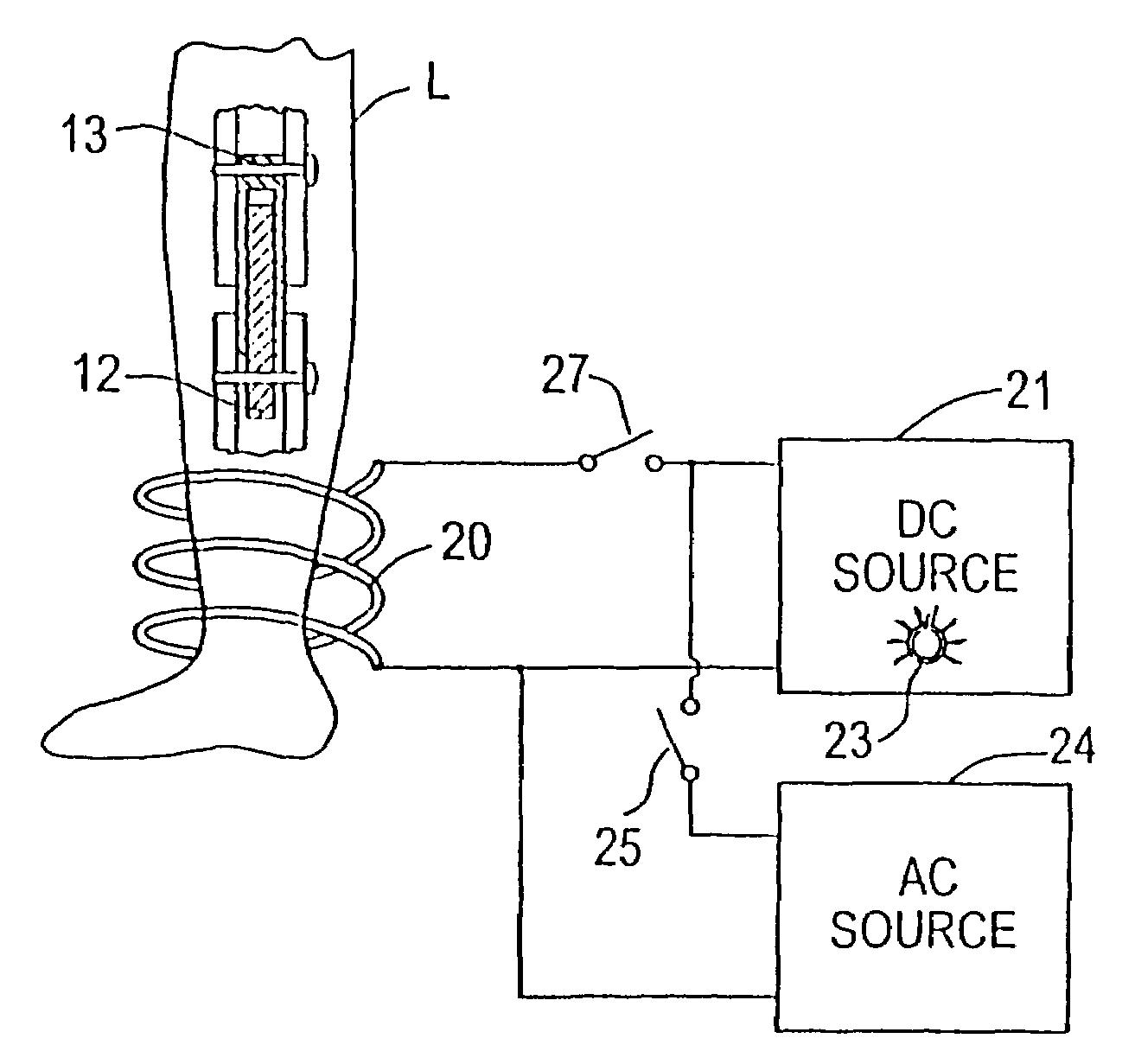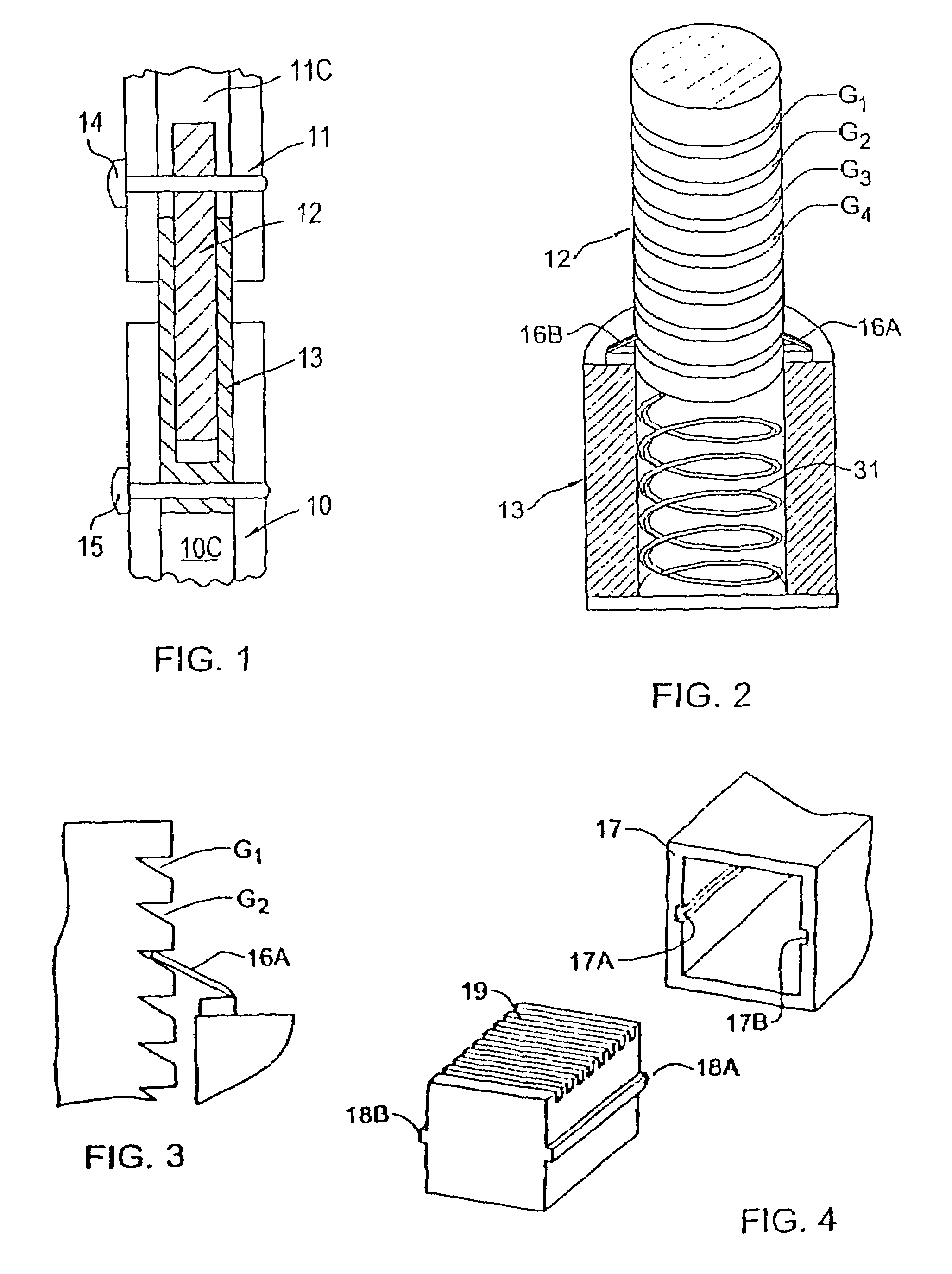Magnetically-actuable intramedullary device
a technology of intramedullary devices and magnetic actuators, which is applied in the field of magnetic actuators of orthopedic implants, can solve the problems of unidirectional axial movement and obtained bone lengthening or shortening, and achieve the effects of promoting accelerated bone healing, increasing the length of bone, and decreasing the length of bon
- Summary
- Abstract
- Description
- Claims
- Application Information
AI Technical Summary
Benefits of technology
Problems solved by technology
Method used
Image
Examples
second embodiment
[0131]The invention does not require cylindrical or tubular implant sections but only that the first section telescope into the second section regardless of their cross sectional geometry. What is essential to the invention is that the first section functions as a permanent magnet and that the second section be non-magnetic so that when the implant installed in the complementary sections of the severed bone is subjected to an impulse of magnetic force, this will induce the first section to incrementally lengthen the implant and thereby lengthen by one step the severed bone.
[0132]Thus the implant shown in FIG. 4 includes a non-magnetic section 17 which is channel-shaped and therefore has a rectangular cross section. Formed in the parallel sidewalls of this section are longitudinally extending grooves 17A and 17B.
[0133]Telescopically received in section 17 is a magnetic core section 18 having a square cross section that matches the cross sectional area between the sidewalls of section...
third embodiment
[0159]Instead of using the implant to lengthen a bone, it can be adapted to shorten a bone to a desired extent. To this end, a short piece of bone to be shortened is excised to provide a relatively large gap between the ends of the complementary bone sections. The ferromagnetic core section of the implant is then lodged in one of these bone sections and the non-magnetic socket section in which the core is telescoped is lodged in the other bone section.
[0160]Then by applying an external magnetic force thereto, the core section of the implant is caused to advance an incremental step further into the socket section, thereby reducing the gap between the bone sections. This action is repeated until the shortened distance between the ends of the bone section provides a bone of the desired shortened length.
[0161]When the implant is adapted to shorten a bone, the detenting of the core section must be such as to permit its stepwise advance into the socket section and prevent retrograde movem...
fourth embodiment
[0162]An orthopedic implant adapted to transport a bone fragment requires a ferromagnetic core the opposite ends of which are telescoped within respective non-magnetic sockets. These sockets are lodged in the complementary ends of the severed bone sections.
[0163]When a magnetic force is applied to the implant, the core is then advanced to step further into one socket and at the same time to step further out of the other socket without changing the length of the bone, for the distance between the ends of the complementary bone section remains unchanged.
[0164]In this way, a bone fragment may be transported from one bone section to the other in a direction that depends on the polarity of the magnetic force applied to the core.
[0165]While there have been disclosed preferred embodiments of the invention, it is to be understood that many changes may be made therein without departing from the spirit of the invention. Thus the implant may be used not to lengthen a bone but as a splint to ma...
PUM
 Login to View More
Login to View More Abstract
Description
Claims
Application Information
 Login to View More
Login to View More - R&D
- Intellectual Property
- Life Sciences
- Materials
- Tech Scout
- Unparalleled Data Quality
- Higher Quality Content
- 60% Fewer Hallucinations
Browse by: Latest US Patents, China's latest patents, Technical Efficacy Thesaurus, Application Domain, Technology Topic, Popular Technical Reports.
© 2025 PatSnap. All rights reserved.Legal|Privacy policy|Modern Slavery Act Transparency Statement|Sitemap|About US| Contact US: help@patsnap.com



